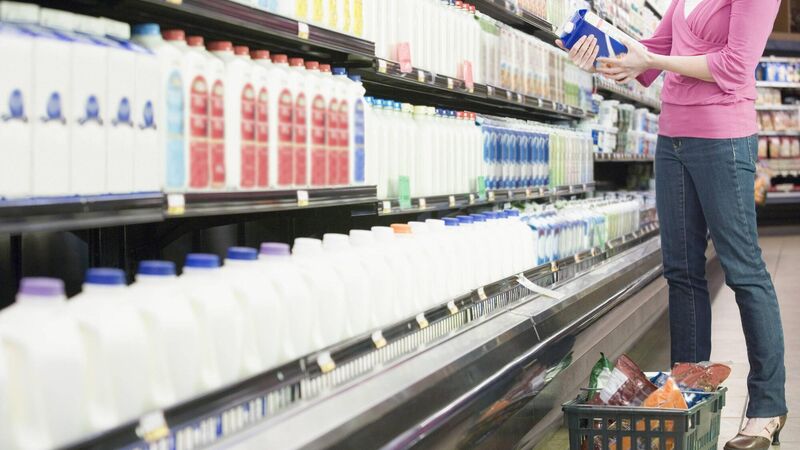Five myths about the milk 'price war' going on in Ireland's supermarkets

Milk is chosen for a price war as it immediately garners the attention of the media and creates what is, in effect, free advertising.
Recently, the major Irish supermarkets started a “price war”, using milk as the battleground. The first shots of the war, a drop of 6c a litre. On average, this is worth about €8 a year per person, if the drop lasts a year.
Milk is important in Ireland. We are in the top five per capita consumers of liquid milk. Our dairy farmers also produce a lot of milk, more than 10 times as much as we drink. This is turned into butter, cheese and protein powder, mainly for export. However, this is a fake price war. What follows are five myths about the “milk wars”
Milk is one of the most profitable sections of a supermarket. The profits per square metre used in store are higher than almost any other section of the store.
This is because the price in the market is normally set high enough to allow a profit to be made for the least efficient delivery system, doorstep delivery. This is an expensive way to service the market and the price of milk is at a level that allows a modest profit to be made by doorstep delivery service providers.
As a result, the big supermarkets can make a healthy profit when selling at the same price. If you're curious to know, cigarettes and tobacco are the lowest profit margin section in a supermarket.
Some 90% of the milk produced in Ireland is used for the production of butter, cheese and protein powder, and most of this is exported. Of the 10% that is drunk by Irish consumers, a disproportionate amount is sold in smaller shops, petrol forecourts or delivered to people’s houses.
Therefore, a drop in price of milk hits smaller convenience stores much harder than the supermarkets. Supermarkets have 85% of grocery sales, but less than 60% of the liquid milk market.
A number of high-profile pronouncements in the Dáil recently accused supermarkets of ripping off the public and price gouging. No evidence was produced to support this, other than the very obvious increase in grocery prices. Of all the industries I’ve worked in, grocery retailing was the one with the strongest focus on trying to reduce prices and give value to customers.

This is challenging, as all of the input costs are going up — wages, energy, and insurance. These costs have also risen for producers. The supermarket buyers have held off as long as they could, but eventually the supplier price increases have to be passed on to the person who ultimately pays for everything, the consumer.
Milk is chosen for a price war as it immediately garners the attention of the media and creates what is, in effect, free advertising. However, most people do not know the price of individual items of groceries. In the trade, there is a small basket of goods known as the KVIs. These are the “known value items”.
These are the small number of products where customers might actually know the price. Milk is a KVI. About 70% of consumers can estimate the price of a litre of milk, plus or minus 15c. This falls to less than 50% when you narrow the band to plus or minus 2c.
This price war has nothing to do with helping consumers make ends meet. The average value per capita is under 68c a month. This is about deflecting attention away from supermarkets. Every time there’s a focus on grocery prices being in “rip-off” territory, there’s a pretend price war.
Milk is a good choice, as the farmers’ trade bodies will immediately call for a ceasefire, thus demonstrating effectively it’s the suppliers who are behind price increases, not the supermarkets. This is the message the big operators want to get across, and this is the main reason for the price drop on milk.
So, when you're going through the till with 20 litres of milk stacked high on the trolley, ask yourself this: did I really just score myself a great deal or am I being manipulated?
- Eoin McGettigan currently chairs two Irish-based companies, United Hardware, and National Beauty Distribution. He has been a main board director of Musgraves, Dunnes Stores and Lifestyle Sports in Ireland, and Co-op retail in the UK.















